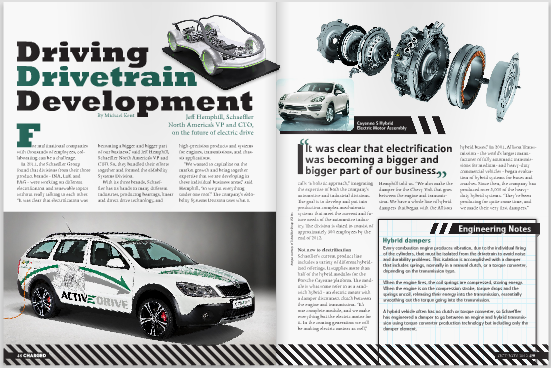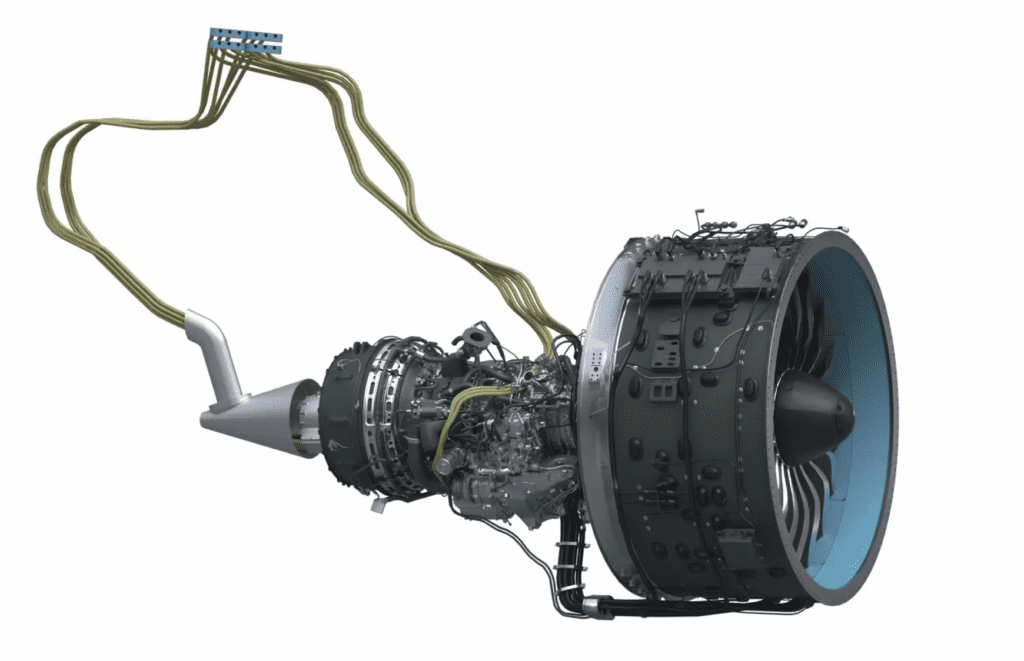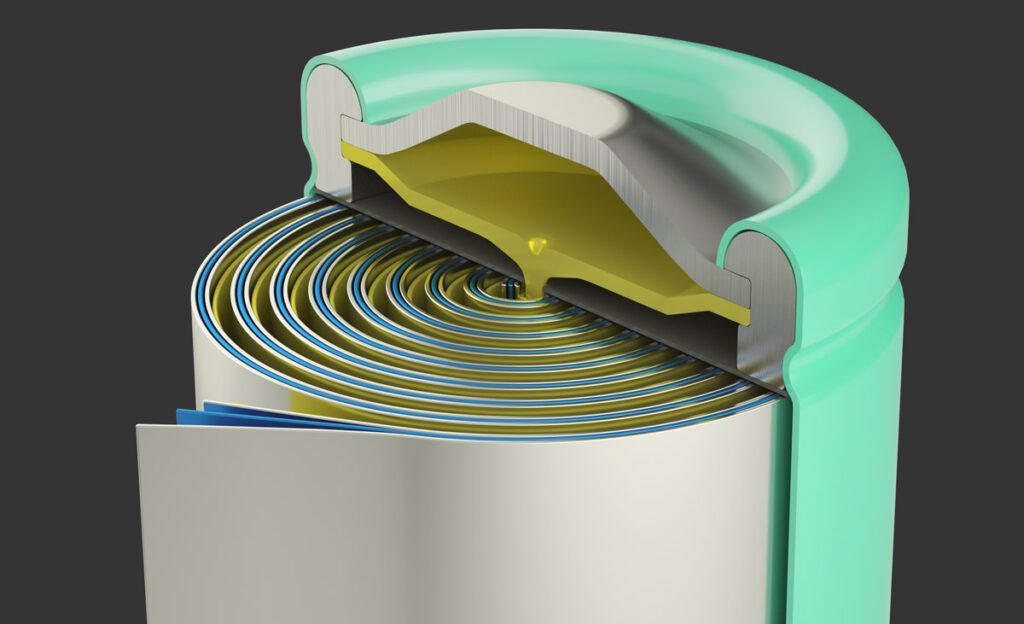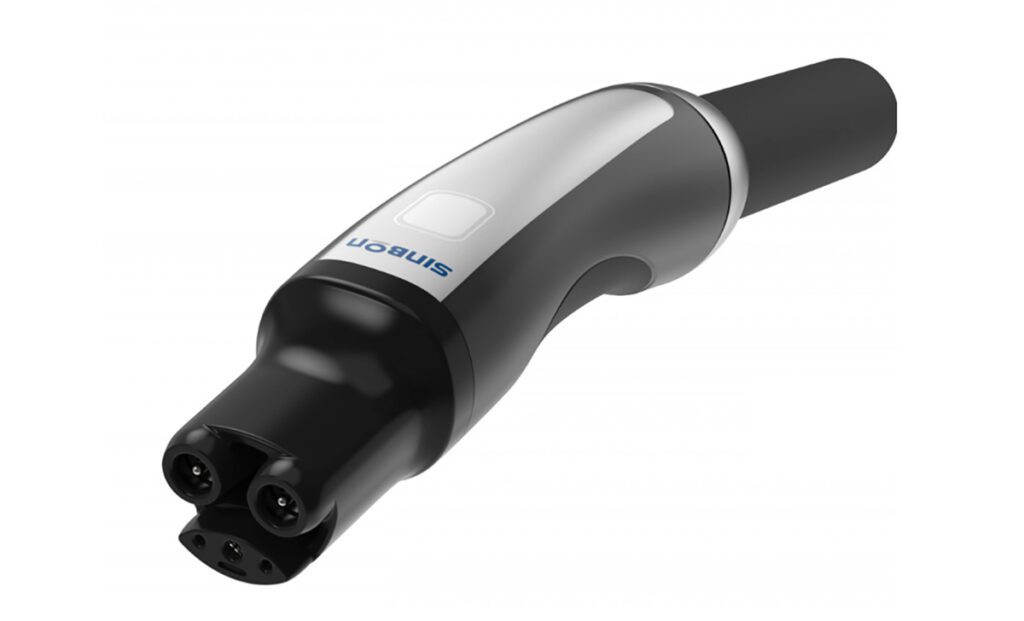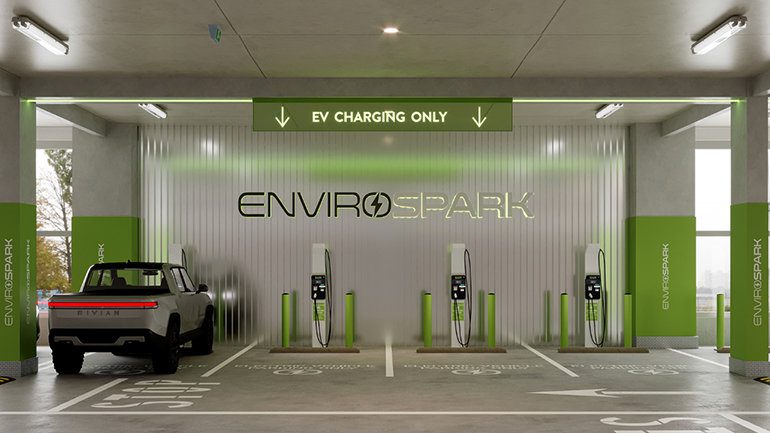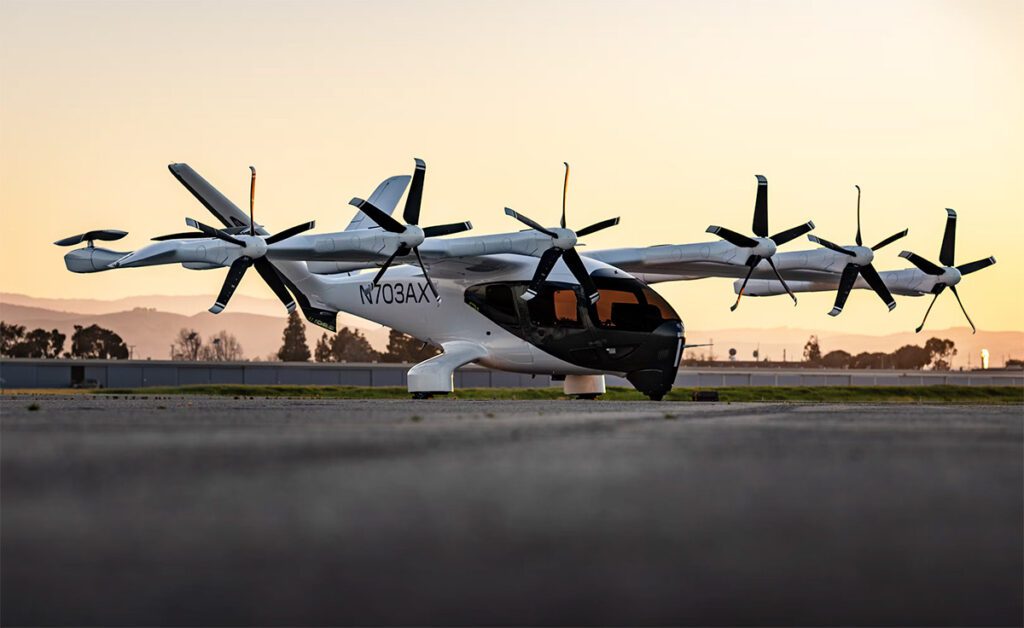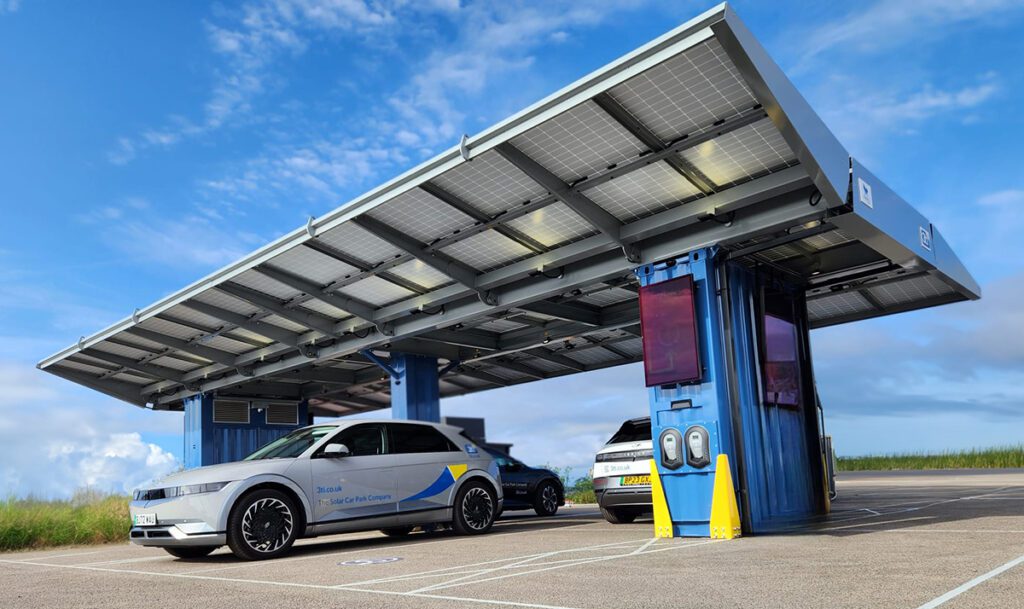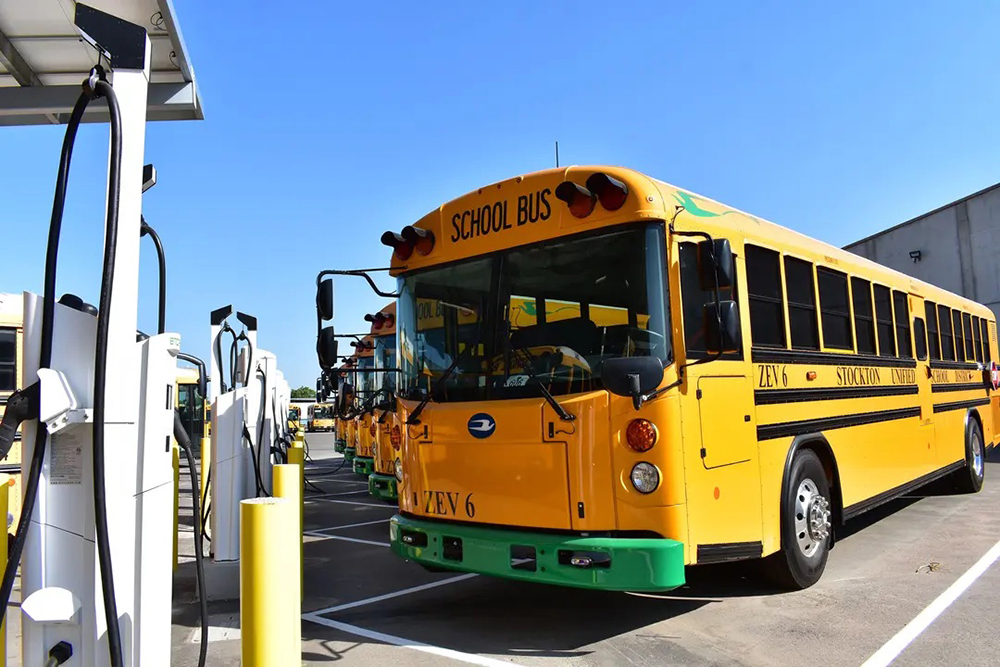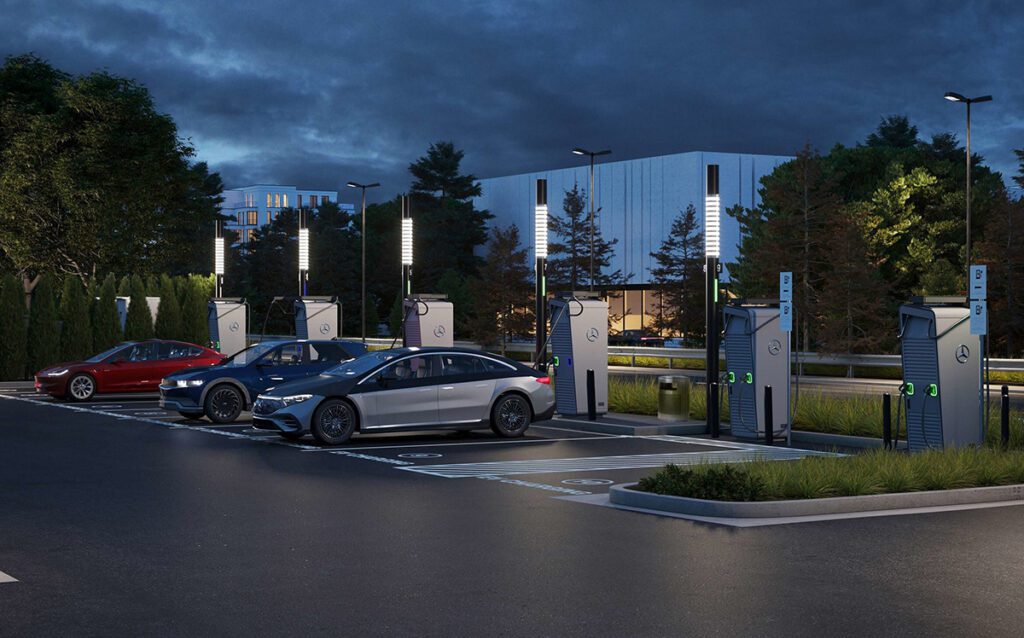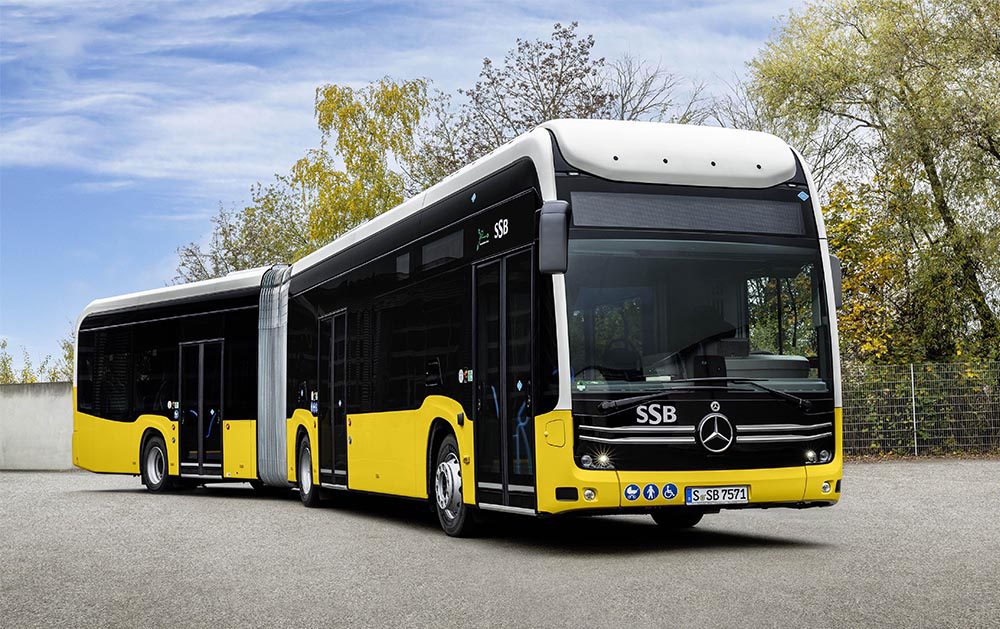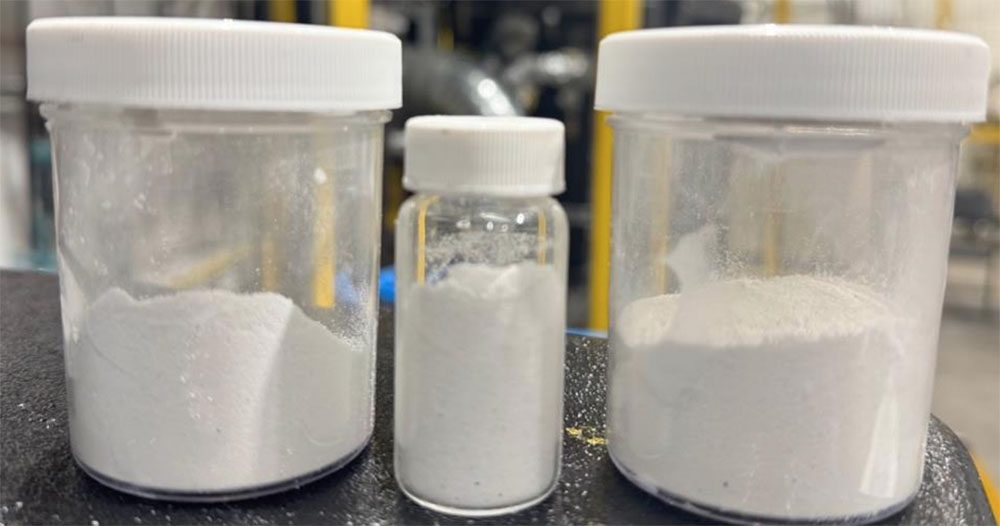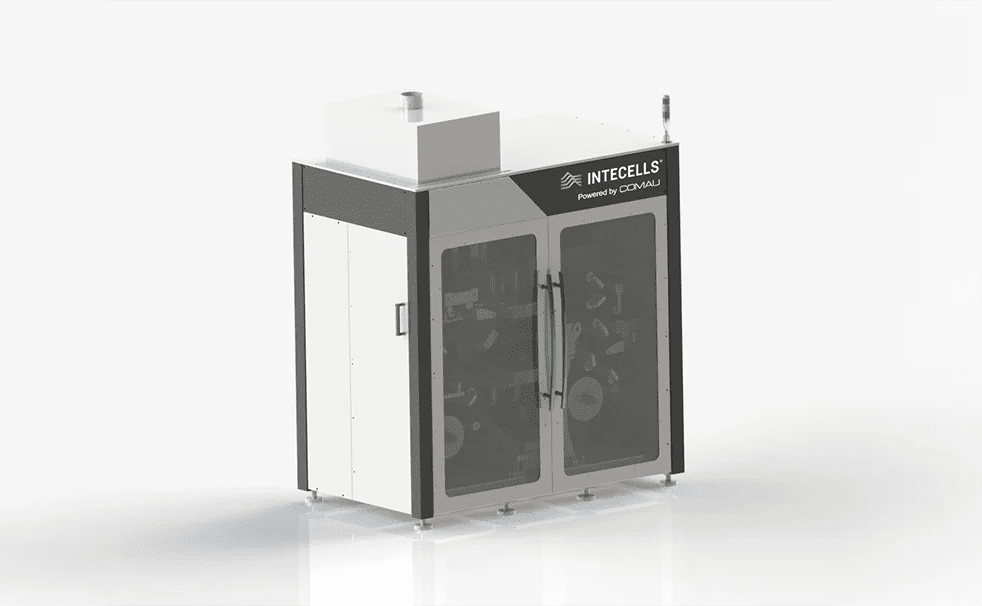Jeff Hemphill talks eAxles, two-speed transmissions, in-wheel motors and more.
For multinational companies with thousands of employees, collaborating can be a challenge.
In 2011, the Schaeffler Group found that divisions from their three product brands – INA, LuK and FAG – were working on different electrification and renewable topics without really talking to each other. “It was clear that electrification was becoming a bigger and bigger part of our business,” said Jeff Hemphill, Schaeffler North America’s VP and CTO. So, they bundled their efforts together and formed the eMobility Systems Division.
With its three brands, Schaeffler has its hands in many different industries, producing bearings, linear and direct drive technology, and high-precision products and systems for engines, transmissions, and chassis applications.
“We wanted to capitalize on the market growth and bring together expertise that we are developing in these individual business areas,” said Hemphill, “so we put everything under one roof.” The company’s eMobility Systems Division uses what it calls “a holistic approach,” integrating the expertise of both the company’s automotive and industrial divisions. The goal is to develop and put into production complex mechatronic systems that meet the current and future needs of the automotive industry. The division is slated to consist of approximately 300 employees by the end of 2012.

Not new to electrification
Schaeffler’s current product line includes a variety of different hybridized offerings. It supplies more than half of the hybrid modules for the Porsche Cayenne platform. The module is what some refer to as a sandwich hybrid – an electric motor with a damper disconnect clutch between the engine and transmission. “It’s one complete module, and we make everything but the electric motor for it. In the coming generation we will be making electric motors as well,” Hemphill told us. “We also make the damper for the Chevy Volt that goes between the engine and transmission. We have a whole line of hybrid dampers that began with the Allison hybrid buses.” In 2001, Allison Transmission – the world’s largest manufacturer of fully automatic transmissions for medium- and heavy-duty commercial vehicles – began evaluation of hybrid systems for buses and coaches. Since then, the company has produced over 5,000 of the heavy-duty hybrid systems. “They’ve been producing for quite some time, and we made their very first dampers.”
This year at the North American International Auto Show (NAIAS) in Detroit, Schaeffler showcased the eDifferential. The system is an active electric differential that combines an electric drive with the option of controlling the power in each wheel individually. This facilitates torque vectoring (distribution of torque between the right and left wheels), which is beneficial for driving dynamics, safety, and comfort.
“With a small additional motor we can actually split the work completely to one wheel or the other, or even reverse the torque on one wheel compared to the other. So if you’re doing handling maneuvers, cornering, or in a safety situation, we can help to drive the car around the corner rather than just having the front wheels steer it around the corner,” says Hemphill.

Hybrid dampers
Every combustion engine produces vibration, due to the individual firing of the cylinders, that must be isolated from the drivetrain to avoid noise and durability problems. This isolation is accomplished with a damper that includes springs, normally in a manual clutch, or a torque converter, depending on the transmission type.
When the engine fires, the coil springs are compressed, storing energy. When the engine is on the compression stroke, torque drops and the springs uncoil, releasing their energy into the transmission, essentially smoothing out the torque going into the transmission.
A hybrid vehicle often has no clutch or torque converter, so Schaeffler has engineered a damper to go between an engine and hybrid transmission using torque converter production technology but including only the damper element.


eAxle
The company also has its eye on the fully electric future. Like many others in the game, Schaeffler’s eMobility Systems Division is looking to drive down costs and increase range. One of the group’s projects is the eAxle, a modular solution for electric transaxles.  To electrify drivetrains, it’s important to find the right balance between effort and benefit. Criteria such as vehicle class and powertrain size (in terms of power and torque) are key elements in achieving appropriate electrification. So Schaeffler is developing several versions of its eAxle, including single- and two-speed options, with or without torque vectoring. With the addition of a two-speed transmission, an EV can get a much higher startup torque by having a lower gear ratio, and at the same time a higher top speed for the vehicle because of the other gear available. “What you can really do is downsize the electric motor and power electronics, and get the same vehicle performance so everything gets cheaper.”
To electrify drivetrains, it’s important to find the right balance between effort and benefit. Criteria such as vehicle class and powertrain size (in terms of power and torque) are key elements in achieving appropriate electrification. So Schaeffler is developing several versions of its eAxle, including single- and two-speed options, with or without torque vectoring. With the addition of a two-speed transmission, an EV can get a much higher startup torque by having a lower gear ratio, and at the same time a higher top speed for the vehicle because of the other gear available. “What you can really do is downsize the electric motor and power electronics, and get the same vehicle performance so everything gets cheaper.”

Torque vectoring
A normal vehicle has a differential that allows the outside wheel to turn faster than the inside, but torque cannot be guided. Some vehicles use traction control, which applies one brake to steer more torque to one wheel.
In true torque vectoring, torque can be actively guided to one wheel or the other, and the wheel speed can be changed. This means the outside wheel can be driven faster than the inside wheel and push the car around the corner.

A good example of the savings is seen between Schaeffler’s first-generation single-speed transmission and its second-generation two-speed transmission. Hemphill boasts that “we made a substantial reduction in motor size and got even better start-up torque and top speed out of it. We went from 105 kW down to 60 kW on the motor size. At the same time we raised the axle torque from 1,200 to 2,000 Newton-meters, and raised the top speed capability from under 150 to 250 km/h.” Theoretically the power electronics should shrink linearly in terms of the cost with the motor’s power rating, a 40 to 45 percent savings.
 The sweet spots
The sweet spots
An electric motor has “islands of efficiency” with regard to torque generation and the speed of the rotor. When the rpm of the motor is fixed to the vehicle’s speed, the case with a single-speed transmission, you slip in and out of the most efficient zone (90 to 95 percent) pretty quickly. A two-speed transmission helps the efficiency of the system, both in the delivery of energy to the road and regeneration of energy. “We have predicted by simulation, and hopefully will be measuring pretty soon, that having a two-speed transmission can add about 6 percent more range, because you can keep the electric motor closer to its peak efficiency while driving and during regenerative braking.”
Shifting focus
A big question in designing a two-speed EV is whether to do the gear change with or without a torque interruption. “We actually offer both, so it really depends on what the OEM wants to do with the vehicle.”
For lower-speed “urban” vehicles, Hemphill thinks that torque-interrupted shifting will be more appropriate. “On the one side this type of shift will be very noticeable to the driver, but on the other side he would hardly ever do it in an urban vehicle.” This type of shift would occur around 30 mph, and feel something like shifting a manual transmission from first to second gear.
“We have a little electric actuator that would do that shift for you. It’s a dog clutch shift. You have to turn the torque off in the electric motor completely, pull the dog clutch out of one gear, put into the other gear and then turn the torque back on. So drivers can feel that like it feels when you shift a manual transmission vehicle. OEMs will have to decide if that’s acceptable or not, and for many applications it probably is.”
If you really want to have a vehicle that feels just like an ICE-powered automatic transmission vehicle, then you have to be able to do a power-on shift. For this Schaeffler designed a system that uses two wet clutches, as in a planetary automatic. “We have invented a very small electric actuator for the clutches. Now we can avoid the need to have hydraulic pressure to operate them, because then we would need a pump that’s running all the time and that would take a lot energy out of the battery.”
This two-speed shift could be considered extreme, because the change in gear ratio is relatively large when compared to a standard automatic transmission. It’s equivalent to changing from first to fourth gear in a combustion-engine-powered car. The problem is that the engine speed, or in this case the electric motor speed, has to change dramatically to end up in the right gear. So synchronization could be a problem, resulting in a jerky shift.
However, with precise control of the electric motor and control over the clutches with the new actuator, Hemphill thinks it’s very manageable. “The advantage that we have is that almost a perfect control over the electric motor is possible. You can command any torque or speed, and you’ll get that within 50 milliseconds on average. So it’s much easier to control than the combustion engine. We think it will be a very seamless shift even though it’s an extreme ratio change. We’re actually assembling a vehicle right now to prove out the whole control methodology.”
Schaeffler has a letter of intent to have the new two-speed tranny in production in 2014. The company is working with a number of OEMs in Europe, North America, and Asia, but says it’s too early to divulge the partnership.

Wheel motors
Also on the development docket is an in-wheel motor, another solution that Hemphill thinks is ideal for small urban vehicles where real estate for passengers and storage is at a premium. In-wheel motor technology provides an opportunity to move the entire powertrain from the body of the car to out in the wheels – freeing up a large portion of the space in compact cars.
Schaeffler believes its long history in bearing technology gives it a leg up with in-wheel motor design, because a robust, reliable bearing is critical to function. The smaller the air gap between the coils and the permanent magnets of the electric motor, the higher torque density and the more efficient the motor becomes. So a bearing is needed that not only carries loads from the road but can also keep the rotor centered with the stator. “Our expertise in bearing stiffness and centering allows us to control our air gap better than someone who has to source a bearing from the outside.”

Among the biggest considerations for the design of any wheel are weight and the concept of unsprung mass. In automotive engineering it is widely assumed that the lighter the wheel, the more vibration it will absorb, and the smoother the ride will be. Adding a motor and power electronics to the wheel assembly substantially increases the mass.
 Schaeffler engineers haven’t taken this concept lightly. “We did a big investigation of unsprung mass, both by simulation and with real world trials in Germany. We actually took a fleet of drivers, put them in the same exact car. Some of them had the equivalent mass of our wheel motor connected to the wheels, and some didn’t. What we found in that exercise is that you can really only feel a difference in extreme handling maneuvers at high speed or on rough roads. And even there, the difference is only one rating point between with and without the unsprung mass.” Couple that with the fact that the main target for the product is urban mobility – vehicles that have a lower top speed, and are much less likely to be involved in extreme handling maneuvers – and Schaeffler doesn’t see the extra mass as an insurmountable obstacle for going to market with in-wheel motors. However, identifying the right platform for the technology could be a hurdle in the short term. “From the technology side we can probably be in production in the next three to four years,” says Hemphill, “but I’m not sure that there will be a vehicle that would demand that solution in that timeframe.”
Schaeffler engineers haven’t taken this concept lightly. “We did a big investigation of unsprung mass, both by simulation and with real world trials in Germany. We actually took a fleet of drivers, put them in the same exact car. Some of them had the equivalent mass of our wheel motor connected to the wheels, and some didn’t. What we found in that exercise is that you can really only feel a difference in extreme handling maneuvers at high speed or on rough roads. And even there, the difference is only one rating point between with and without the unsprung mass.” Couple that with the fact that the main target for the product is urban mobility – vehicles that have a lower top speed, and are much less likely to be involved in extreme handling maneuvers – and Schaeffler doesn’t see the extra mass as an insurmountable obstacle for going to market with in-wheel motors. However, identifying the right platform for the technology could be a hurdle in the short term. “From the technology side we can probably be in production in the next three to four years,” says Hemphill, “but I’m not sure that there will be a vehicle that would demand that solution in that timeframe.”

Unsprung Mass
Unsprung mass refers to the mass below the suspension springs, typically the wheel, brake rotor, and some of the suspension arm mass. When the wheel is bouncing over a rough road these parts all gain kinetic energy due to their motion. This energy must be overcome by the damping of the shock absorber and the force of the suspension spring in order to keep the wheel pushed down against the road for responsive handling.When the mass is raised, with the addition of an in-wheel motor for example, the kinetic energy when bouncing is raised, and the shocks and springs have to work harder to overcome the additional energy.

For larger vehicles, the space-saving characteristics of in-wheel motors are not as beneficial. In a Ford Explorer, for example, the percentage of area affected by the powertrain is not large enough to go through the trouble of having multiple motors and power electronics modules, whereas in a city car, in-wheel technology could really transform the vehicle.
“It’s been about three years now that more than half the world’s population lives in cities, and that number is growing every day. You can start to imagine that small city cars are going to become more and more important.”







